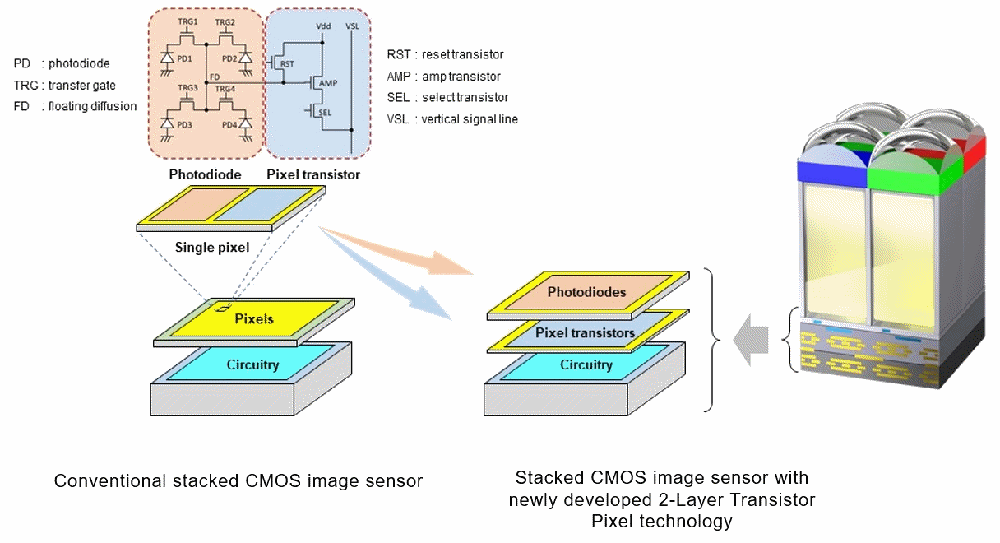Sony Semiconductor Solutions Corporation has developed the world’s first stacked CMOS image sensor technology with 2-Layer Transistor Pixels, delivering significantly better performance than current CMOS technology.
That is, photodiodes and pixel transistors are on different substrate layers, doubling ‘saturation signal level’, which widens dynamic range and reduces noise.
 The new technology will enable pixels to maintain or improve their existing performance at not only current but also smaller (physical) pixel sizes.
The new technology will enable pixels to maintain or improve their existing performance at not only current but also smaller (physical) pixel sizes.
A ‘simple’ stacked CMOS image sensor – which Sony pioneered – adopts a stacked structure consisting of a pixel chip made up of back-illuminated pixels, stacked atop a logic chip where signal processing circuits are formed. Within the pixel chip, photodiodes for converting light to electrical signals, and pixel transistors for controlling the signals are situated alongside each other on the same layer.
The new stacking technology doubles saturation signal level and, in turn, widens dynamic range.
Another advantage is that the amp transistors can be increased in size, substantially reducing the ‘noise’ to which nighttime and other dark-location images are prone.
The widened dynamic range and noise reduction available from this new technology will prevent underexposure and overexposure in settings with a combination of bright and dim illumination (eg, back-lighting), and enable high-quality, low-noise images even in low-light settings.
Initial application will be in smartphone cameras, which increasingly take superb images in strong daylight, but are found wanting when they don’t have sufficient light to work with. However the notion of increasing the performance of individual picture elements while maintaining the same physical size of each pixel will surely find its way to dedicated digital cameras as well.





Be First to Comment